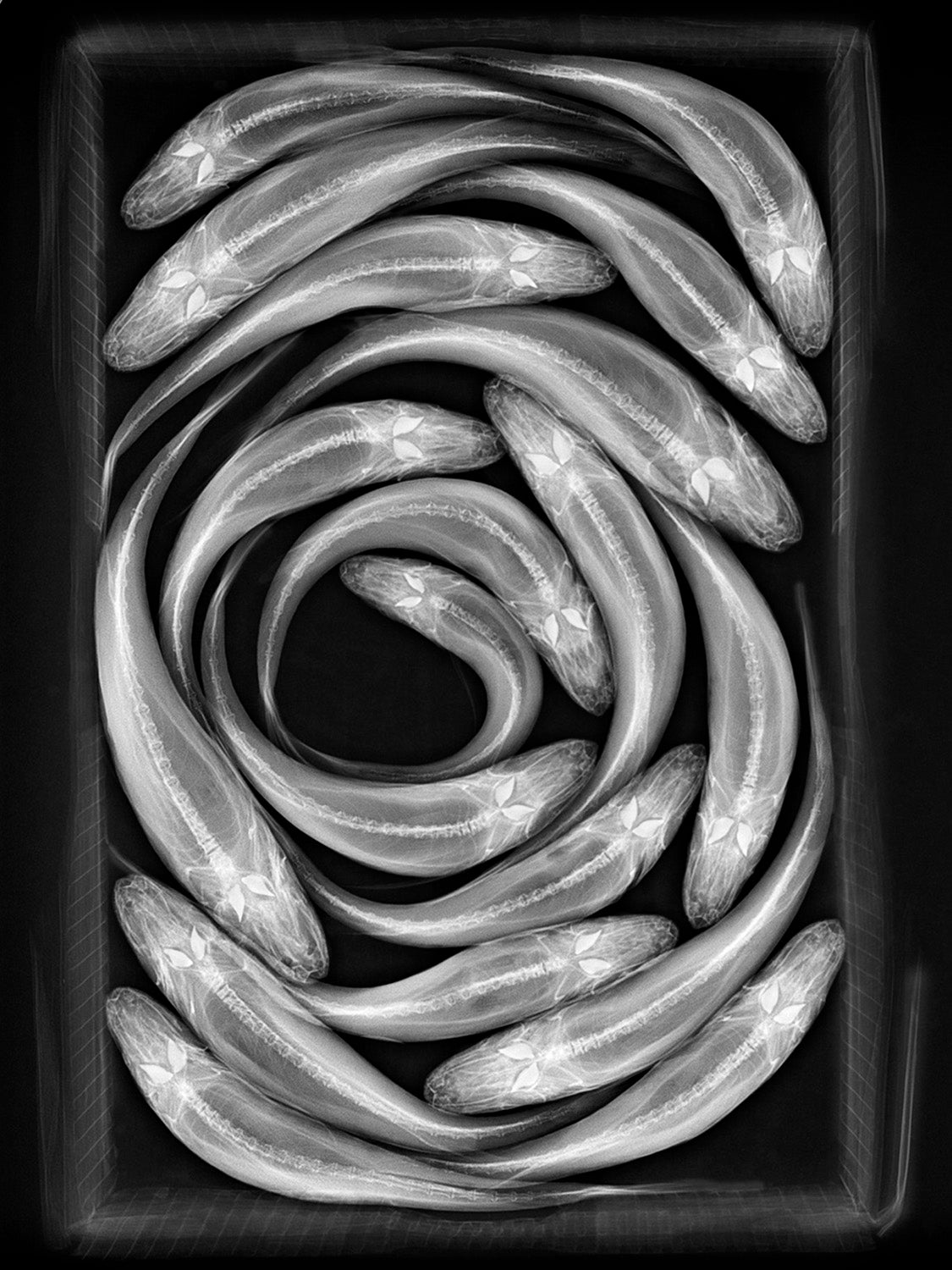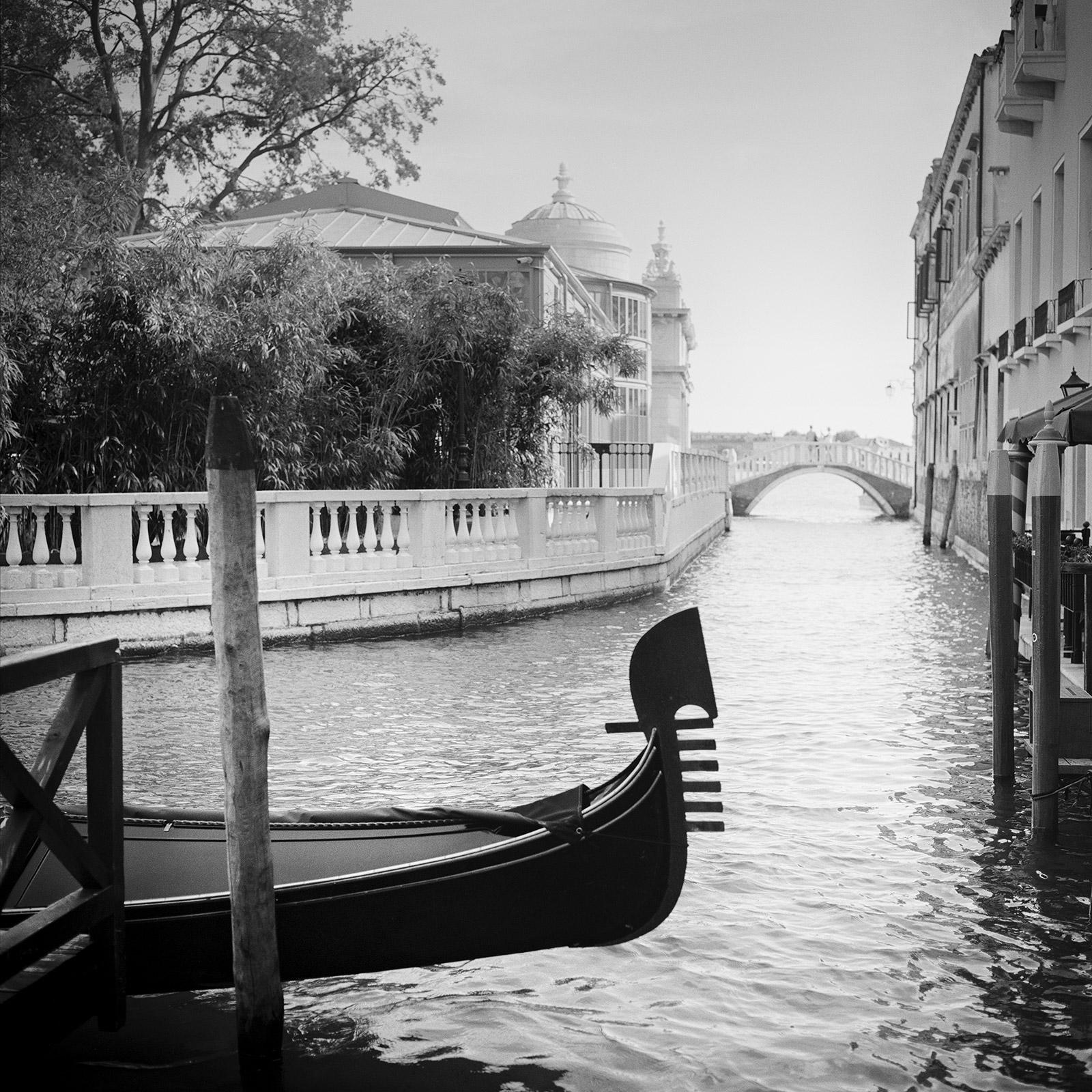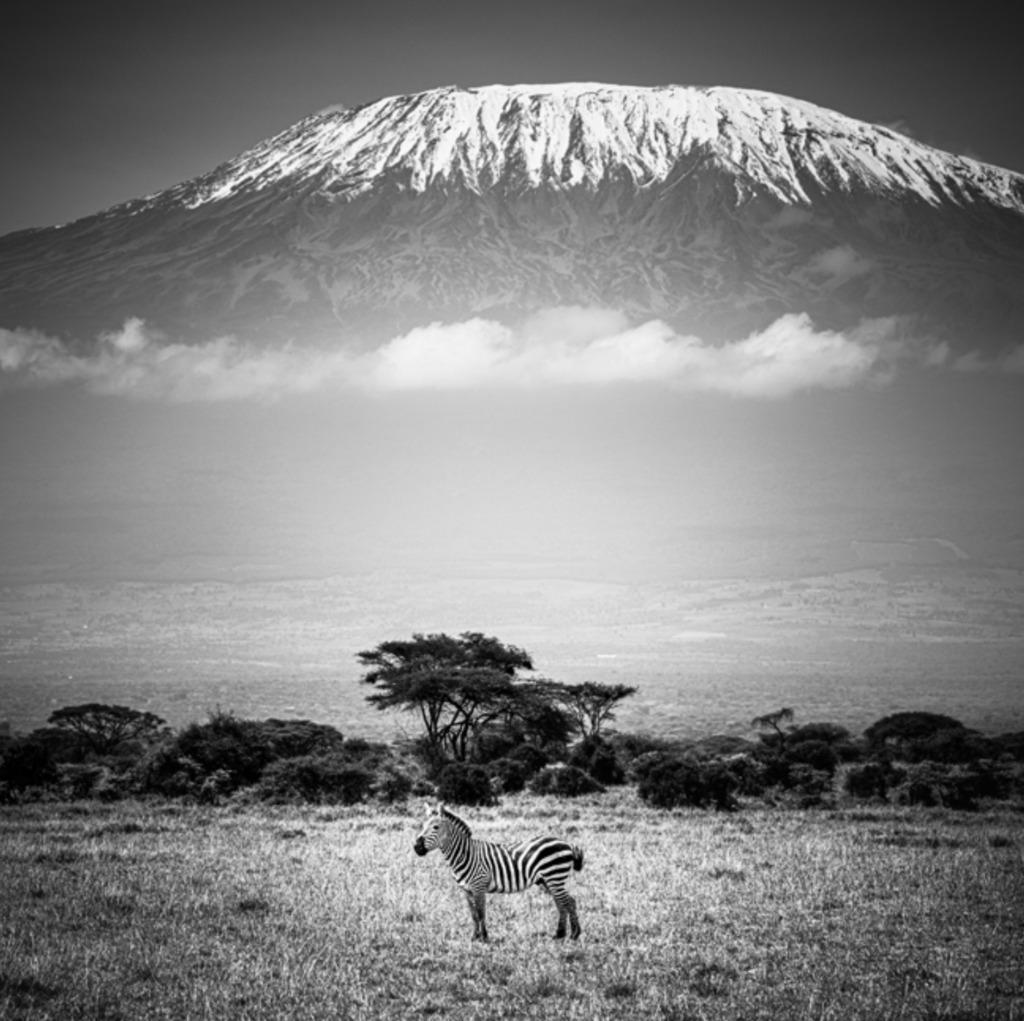Items Similar to "Mianus Motor Works", 2007
Want more images or videos?
Request additional images or videos from the seller
1 of 5
Ian Gittler"Mianus Motor Works", 20072007
2007
About the Item
Ian Gittler’s Motor Art series-photographs of century-old engine parts, gears, sparkplugs, and brand tags-offers respite from the digital fetishism, overexposure and one-hundred-forty-character bursts of communication that seem to define our era. Gittler is no luddite, he loves his iPhone. But these images, often obscuring the objects beyond identification, take unsentimental pleasure in elements of weight, ground, volume and permanence that are more closely associated with a bygone heyday of industrialization.
These photographs are about a tangible physical experience, about moving parts. Gittler’s expert printing-his ability to see the potential in a frame and employ the techniques necessary to articulate that vision on paper-brings the work to life. There’s wit in the brand iconography and a documentary component, but Gittler resists prescribing interpretations, saying subtext isn’t the point. His use of extremely shallow depth of field, intense contrast and exploded grain is muscular and poetic. But subtext is relevant.
Although Robin Rice first approached Ian Gittler about his vector-based art on photo paper, the gallerist challenged him to create a series of photographs with that kind of machismo. As a native New Yorker who was marched through the halls of MOMA as a toddler, Gittler’s inspiration-his idea of macho-has less to do with cowboys and racecar drivers than with Franz Kline brushstrokes and modernist design. For Gittler, macho means the maximum amount of black ink that can lie across a sheet of photo paper. That kind of force. He narrowed his field of view for this series-often to a centimeter or two-in order to achieve a purely visual, visceral response.
Gittler titled the work Motor Art in tribute to the 1934 Museum of Modern Art exhibit, Machine Art. Upon its sixtieth anniversary, Phillip Johnson wrote of the show (and of his own essay for its original opening), “The thrust was clear: anti-handicraft, industrial methods alone satisfied our age; Platonic dreams of perfection were the ideal.”
Ian Gittler photographs, draws, writes, and makes music. He has created album covers for Willie Nelson, Roy Hargrove and Aerosmith, travel essays and advertising. Gittler received particular acclaim for Pornstar (Simon & Schuster ‘99), a critical documentary about the pornographic film industry, which he photographed, wrote, and designed. The book was excerpted in Rolling Stone and featured as a U.S. News & World Report cover story. Gittler, a master printer, spent part of his early career overseeing exhibition, advertising, and editorial printing for several legendary photographers. Gittler is a graduate of Bennington College. Recently he’s been lecturing and teaching at Parsons and ICP.
Listing is for UNFRAMED print. Inquire within for framing.
Edition 1 of 25.
If the exhibition piece is sold or the customer orders a different print size, the photograph is produced upon purchase. Please allow two weeks for production.
Shipping time depends on method of shipping.
Price is subject to availability. The Robin Rice Gallery reserves the right to adjust this price depending on the current edition of the photograph.
American, motorcycle, still life, car, black and white, sign, transportation, classic, vintage, text, motor, steampunk, industrial, factory, mechanical, machine
- Creator:
- Creation Year:2007
- Dimensions:Height: 20 in (50.8 cm)Width: 24 in (60.96 cm)
- More Editions & Sizes:11 x 14Price: $1,00016 x 20Price: $1,25020 x 24Price: $1,75030 x 40Price: $3,000
- Medium:
- Movement & Style:
- Period:
- Framing:Framing Options Available
- Condition:
- Gallery Location:Hudson, NY
- Reference Number:1stDibs: G101130117

About the Seller
5.0
Vetted Seller
These experienced sellers undergo a comprehensive evaluation by our team of in-house experts.
Established in 1990
1stDibs seller since 2010
120 sales on 1stDibs
Typical response time: 2 hours
- ShippingRetrieving quote...Ships From: New York, NY
- Return PolicyThis item cannot be returned.
More From This SellerView All
- "Solex Carburetor 1928", 2007By Ian GittlerLocated in Hudson, NYIan Gittler’s Motor Art series-photographs of century-old engine parts, gears, sparkplugs, and brand tags-offers respite from the digital fetishism, overexposure and one-hundred-forty-character bursts of communication that seem to define our era. Gittler is no luddite, he loves his iPhone. But these images, often obscuring the objects beyond identification, take unsentimental pleasure in elements of weight, ground, volume and permanence that are more closely associated with a bygone heyday of industrialization. These photographs are about a tangible physical experience, about moving parts. Gittler’s expert printing-his ability to see the potential in a frame and employ the techniques necessary to articulate that vision on paper-brings the work to life. There’s wit in the brand iconography and a documentary component, but Gittler resists prescribing interpretations, saying subtext isn’t the point. His use of extremely shallow depth of field, intense contrast and exploded grain is muscular and poetic. But subtext is relevant. Although Robin Rice first approached Ian Gittler about his vector-based art on photo paper, the gallerist challenged him to create a series of photographs with that kind of machismo. As a native New Yorker who was marched through the halls of MOMA as a toddler, Gittler’s inspiration-his idea of macho-has less to do with cowboys and racecar drivers than with Franz Kline brushstrokes and modernist design. For Gittler, macho means the maximum amount of black ink that can lie across a sheet of photo paper. That kind of force. He narrowed his field of view for this series-often to a centimeter or two-in order to achieve a purely visual, visceral response. Gittler titled the work Motor Art in tribute to the 1934 Museum of Modern Art exhibit, Machine Art. Upon its sixtieth anniversary, Phillip Johnson wrote of the show (and of his own essay for its original opening), “The thrust was clear: anti-handicraft, industrial methods alone satisfied our age; Platonic dreams of perfection were the ideal.” Ian Gittler photographs, draws, writes, and makes music. He has created album covers for Willie Nelson, Roy Hargrove...Category
21st Century and Contemporary Contemporary Black and White Photography
MaterialsArchival Paper, Pigment
- "Trip Hammer", 2010By Ian GittlerLocated in Hudson, NYIan Gittler’s Motor Art series-photographs of century-old engine parts, gears, sparkplugs, and brand tags-offers respite from the digital fetishism, overexposure and one-hundred-forty-character bursts of communication that seem to define our era. Gittler is no luddite, he loves his iPhone. But these images, often obscuring the objects beyond identification, take unsentimental pleasure in elements of weight, ground, volume and permanence that are more closely associated with a bygone heyday of industrialization. These photographs are about a tangible physical experience, about moving parts. Gittler’s expert printing-his ability to see the potential in a frame and employ the techniques necessary to articulate that vision on paper-brings the work to life. There’s wit in the brand iconography and a documentary component, but Gittler resists prescribing interpretations, saying subtext isn’t the point. His use of extremely shallow depth of field, intense contrast and exploded grain is muscular and poetic. But subtext is relevant. Although Robin Rice first approached Ian Gittler about his vector-based art on photo paper, the gallerist challenged him to create a series of photographs with that kind of machismo. As a native New Yorker who was marched through the halls of MOMA as a toddler, Gittler’s inspiration-his idea of macho-has less to do with cowboys and racecar drivers than with Franz Kline brushstrokes and modernist design. For Gittler, macho means the maximum amount of black ink that can lie across a sheet of photo paper. That kind of force. He narrowed his field of view for this series-often to a centimeter or two-in order to achieve a purely visual, visceral response. Gittler titled the work Motor Art in tribute to the 1934 Museum of Modern Art exhibit, Machine Art. Upon its sixtieth anniversary, Phillip Johnson wrote of the show (and of his own essay for its original opening), “The thrust was clear: anti-handicraft, industrial methods alone satisfied our age; Platonic dreams of perfection were the ideal.” Ian Gittler photographs, draws, writes, and makes music. He has created album covers for Willie Nelson, Roy Hargrove...Category
21st Century and Contemporary Contemporary Black and White Photography
MaterialsArchival Paper, Pigment
- "Marston Excelsior", 2007By Ian GittlerLocated in Hudson, NYIan Gittler’s Motor Art series-photographs of century-old engine parts, gears, sparkplugs, and brand tags-offers respite from the digital fetishism, overexpo...Category
21st Century and Contemporary Contemporary Black and White Photography
MaterialsArchival Paper, Pigment
- "Pressure Gauge", 2007By Ian GittlerLocated in Hudson, NYIan Gittler’s Motor Art series-photographs of century-old engine parts, gears, sparkplugs, and brand tags-offers respite from the digital fetishism, overexposure and one-hundred-forty-character bursts of communication that seem to define our era. Gittler is no luddite, he loves his iPhone. But these images, often obscuring the objects beyond identification, take unsentimental pleasure in elements of weight, ground, volume and permanence that are more closely associated with a bygone heyday of industrialization. These photographs are about a tangible physical experience, about moving parts. Gittler’s expert printing-his ability to see the potential in a frame and employ the techniques necessary to articulate that vision on paper-brings the work to life. There’s wit in the brand iconography and a documentary component, but Gittler resists prescribing interpretations, saying subtext isn’t the point. His use of extremely shallow depth of field, intense contrast and exploded grain is muscular and poetic. But subtext is relevant. Although Robin Rice first approached Ian Gittler about his vector-based art on photo paper, the gallerist challenged him to create a series of photographs with that kind of machismo. As a native New Yorker who was marched through the halls of MOMA as a toddler, Gittler’s inspiration-his idea of macho-has less to do with cowboys and racecar drivers than with Franz Kline brushstrokes and modernist design. For Gittler, macho means the maximum amount of black ink that can lie across a sheet of photo paper. That kind of force. He narrowed his field of view for this series-often to a centimeter or two-in order to achieve a purely visual, visceral response. Gittler titled the work Motor Art in tribute to the 1934 Museum of Modern Art exhibit, Machine Art. Upon its sixtieth anniversary, Phillip Johnson wrote of the show (and of his own essay for its original opening), “The thrust was clear: anti-handicraft, industrial methods alone satisfied our age; Platonic dreams of perfection were the ideal.” Ian Gittler photographs, draws, writes, and makes music. He has created album covers for Willie Nelson, Roy Hargrove...Category
21st Century and Contemporary Contemporary Black and White Photography
MaterialsArchival Paper, Pigment
- "Cummins Steam Pump", 2007By Ian GittlerLocated in Hudson, NYIan Gittler’s Motor Art series-photographs of century-old engine parts, gears, sparkplugs, and brand tags-offers respite from the digital fetishism, overexposure and one-hundred-forty-character bursts of communication that seem to define our era. Gittler is no luddite, he loves his iPhone. But these images, often obscuring the objects beyond identification, take unsentimental pleasure in elements of weight, ground, volume and permanence that are more closely associated with a bygone heyday of industrialization. These photographs are about a tangible physical experience, about moving parts. Gittler’s expert printing-his ability to see the potential in a frame and employ the techniques necessary to articulate that vision on paper-brings the work to life. There’s wit in the brand iconography and a documentary component, but Gittler resists prescribing interpretations, saying subtext isn’t the point. His use of extremely shallow depth of field, intense contrast and exploded grain is muscular and poetic. But subtext is relevant. Although Robin Rice first approached Ian Gittler about his vector-based art on photo paper, the gallerist challenged him to create a series of photographs with that kind of machismo. As a native New Yorker who was marched through the halls of MOMA as a toddler, Gittler’s inspiration-his idea of macho-has less to do with cowboys and racecar drivers than with Franz Kline brushstrokes and modernist design. For Gittler, macho means the maximum amount of black ink that can lie across a sheet of photo paper. That kind of force. He narrowed his field of view for this series-often to a centimeter or two-in order to achieve a purely visual, visceral response. Gittler titled the work Motor Art in tribute to the 1934 Museum of Modern Art exhibit, Machine Art. Upon its sixtieth anniversary, Phillip Johnson wrote of the show (and of his own essay for its original opening), “The thrust was clear: anti-handicraft, industrial methods alone satisfied our age; Platonic dreams of perfection were the ideal.” Ian Gittler photographs, draws, writes, and makes music. He has created album covers for Willie Nelson, Roy Hargrove...Category
21st Century and Contemporary Contemporary Still-life Photography
MaterialsArchival Paper, Pigment
- "Ideal", 2007By Ian GittlerLocated in Hudson, NY“IDEAL" features a 1.5 horsepower lawnmower engine manufactured in 1924 that still works. And the brand name-Ideal-speaks to an attitude about fabrication and manufacture linking pri...Category
21st Century and Contemporary Contemporary Black and White Photography
MaterialsArchival Paper, Pigment
You May Also Like
- Stairway to Beach, Portugal, fine art black and white photography, landscapesBy Gerald Berghammer, Ina ForstingerLocated in Vienna, ViennaGerald Berghammer - Limited edition of 9. Archival fine art pigment print. Signed, titled, dated and numbered by artist. Certificate of authenticity included. Printed with 4cm white ...Category
2010s Contemporary Still-life Photography
MaterialsArchival Pigment, Black and White, Digital, Digital Pigment, Photographi...
- Romance in Venice, Gondoliere, black and white photography, fine art landscapeBy Gerald BerghammerLocated in Vienna, ViennaBlack and white fine art cityscape - landscape photography. Archival pigment ink print as part of a limited edition of 9. All Gerald Berghammer prints are made to order in limited ed...Category
2010s Contemporary Still-life Photography
MaterialsPhotographic Film, Archival Ink, Archival Paper, Archival Pigment, Black...
- The french duchess - Limited edition contemporary nude art print, SculptureBy Sam ThomasLocated in Barcelona, BarcelonaThe french duchess - Limited edition pigment print - Limited Editions of 5 Sculpture of a naked woman covered in snow in the Tuileries gardens in Paris, France, 2005 Jardins des T...Category
Early 2000s Contemporary Still-life Photography
MaterialsArchival Paper, Photographic Paper, Black and White, Pigment, Archival P...
- Copts 04 - Signed limited edition portrait print, Black white, Cairo, EgyptBy Laurent CampusLocated in Barcelona, BarcelonaCopts 04 - Signed limited edition archival pigment print, 2012 - Edition of 5 In assignment for ARTE & LE LOUVRE 2012 Exhibition in Le Louvre, Paris France This is an Archival...Category
2010s Contemporary Black and White Photography
MaterialsArchival Paper, Photographic Paper, Black and White, Giclée, Pigment, Ar...
- Signed limited edition still life print, botanical close-up, FlowerHead 1By Ian SandersonLocated in Barcelona, BarcelonaAn original signed archival pigment print on Hahnemühle Photo Rag® Baryta 315 gsm paper by Scottish artist Ian Sanderson (1951- 2020) titled ‘FlowerHead 1 ‘ who was captured on film ...Category
1980s Contemporary Black and White Photography
MaterialsPhotographic Film, Archival Paper, Photographic Paper, Black and White, ...
- Zebra KiliLocated in New York, NYInspired by her love for nature, Griet Van Malderen (Belgium, 1970), a self-taught wildlife photographer from Flanders in Belgium, has been exploring Africa’s wild places for the pas...Category
2010s Contemporary Black and White Photography
MaterialsPigment, Archival Pigment, Photographic Film, Archival Paper, Photograph...
Recently Viewed
View AllMore Ways To Browse
American Motors
Vintage Motor
Industrial Gears
Used Industrial Gears
Phillip Paper And Ink
Rice Grain
Phillip Johnson
Vintage Industrial Rolling
Schuster Modern
Sheet Music Vintage
Motorcycle Signs
Travel Photo Album
Vintage Industrial Car
Motorcycles Parts
Roy Brushstrokes
Used Cowboy Gear
Vintage Pornography
Narrow Hall T





